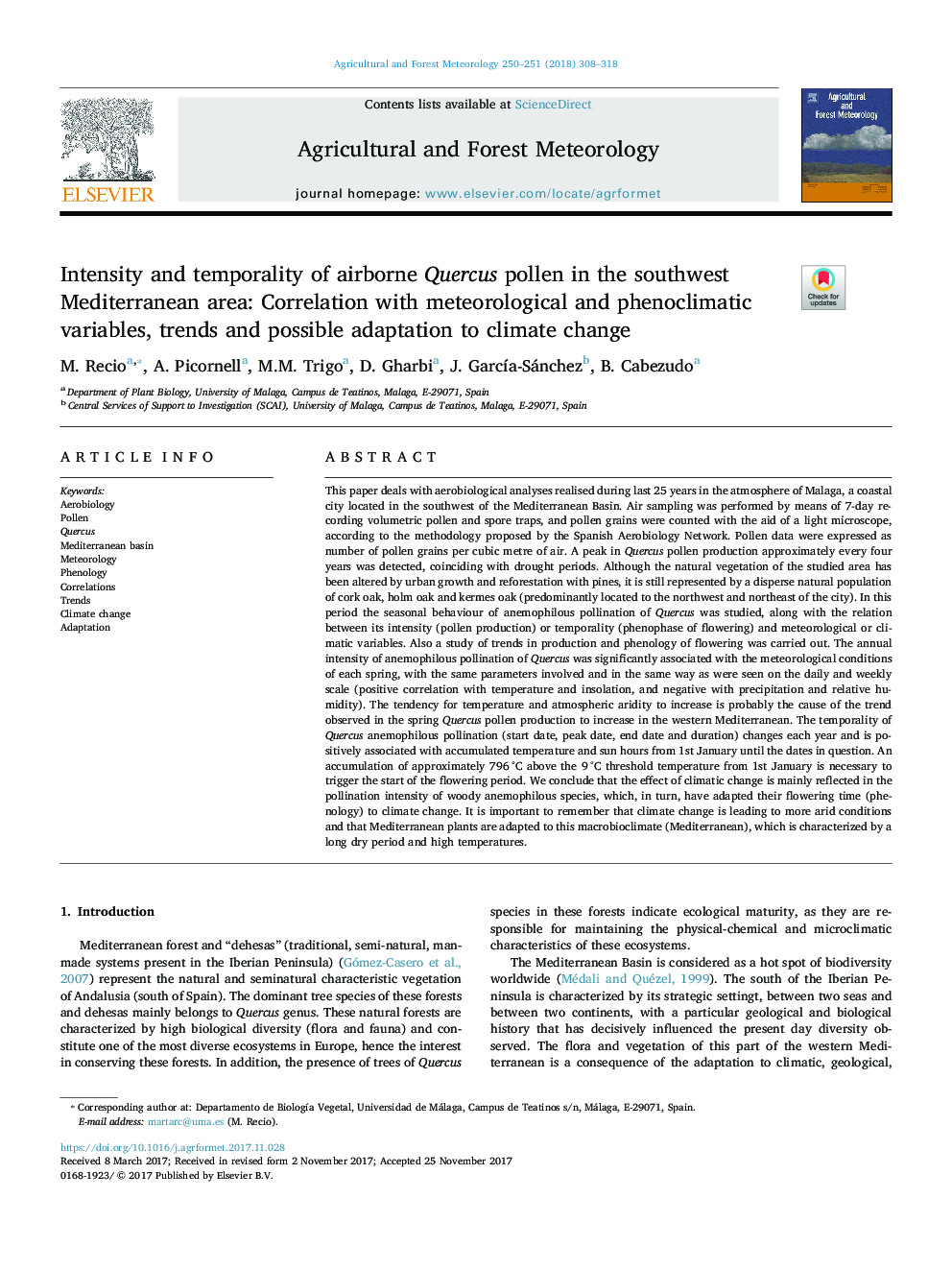| کد مقاله | کد نشریه | سال انتشار | مقاله انگلیسی | نسخه تمام متن |
|---|---|---|---|---|
| 6536821 | 1420851 | 2018 | 11 صفحه PDF | دانلود رایگان |
عنوان انگلیسی مقاله ISI
Intensity and temporality of airborne Quercus pollen in the southwest Mediterranean area: Correlation with meteorological and phenoclimatic variables, trends and possible adaptation to climate change
ترجمه فارسی عنوان
شدت و موقعیت گرده هوایی کوئرکوس در منطقه جنوب غربی مدیترانه: همبستگی با متغیرهای هواشناسی و فنل کلمایی، روند و سازگاری احتمالی با تغییرات آب و هوا
دانلود مقاله + سفارش ترجمه
دانلود مقاله ISI انگلیسی
رایگان برای ایرانیان
کلمات کلیدی
موضوعات مرتبط
مهندسی و علوم پایه
علوم زمین و سیارات
علم هواشناسی
چکیده انگلیسی
This paper deals with aerobiological analyses realised during last 25 years in the atmosphere of Malaga, a coastal city located in the southwest of the Mediterranean Basin. Air sampling was performed by means of 7-day recording volumetric pollen and spore traps, and pollen grains were counted with the aid of a light microscope, according to the methodology proposed by the Spanish Aerobiology Network. Pollen data were expressed as number of pollen grains per cubic metre of air. A peak in Quercus pollen production approximately every four years was detected, coinciding with drought periods. Although the natural vegetation of the studied area has been altered by urban growth and reforestation with pines, it is still represented by a disperse natural population of cork oak, holm oak and kermes oak (predominantly located to the northwest and northeast of the city). In this period the seasonal behaviour of anemophilous pollination of Quercus was studied, along with the relation between its intensity (pollen production) or temporality (phenophase of flowering) and meteorological or climatic variables. Also a study of trends in production and phenology of flowering was carried out. The annual intensity of anemophilous pollination of Quercus was significantly associated with the meteorological conditions of each spring, with the same parameters involved and in the same way as were seen on the daily and weekly scale (positive correlation with temperature and insolation, and negative with precipitation and relative humidity). The tendency for temperature and atmospheric aridity to increase is probably the cause of the trend observed in the spring Quercus pollen production to increase in the western Mediterranean. The temporality of Quercus anemophilous pollination (start date, peak date, end date and duration) changes each year and is positively associated with accumulated temperature and sun hours from 1st January until the dates in question. An accumulation of approximately 796â¯Â°C above the 9â¯Â°C threshold temperature from 1st January is necessary to trigger the start of the flowering period. We conclude that the effect of climatic change is mainly reflected in the pollination intensity of woody anemophilous species, which, in turn, have adapted their flowering time (phenology) to climate change. It is important to remember that climate change is leading to more arid conditions and that Mediterranean plants are adapted to this macrobioclimate (Mediterranean), which is characterized by a long dry period and high temperatures.
ناشر
Database: Elsevier - ScienceDirect (ساینس دایرکت)
Journal: Agricultural and Forest Meteorology - Volumes 250â251, 15 March 2018, Pages 308-318
Journal: Agricultural and Forest Meteorology - Volumes 250â251, 15 March 2018, Pages 308-318
نویسندگان
M. Recio, A. Picornell, M.M. Trigo, D. Gharbi, J. GarcÃa-Sánchez, B. Cabezudo,
